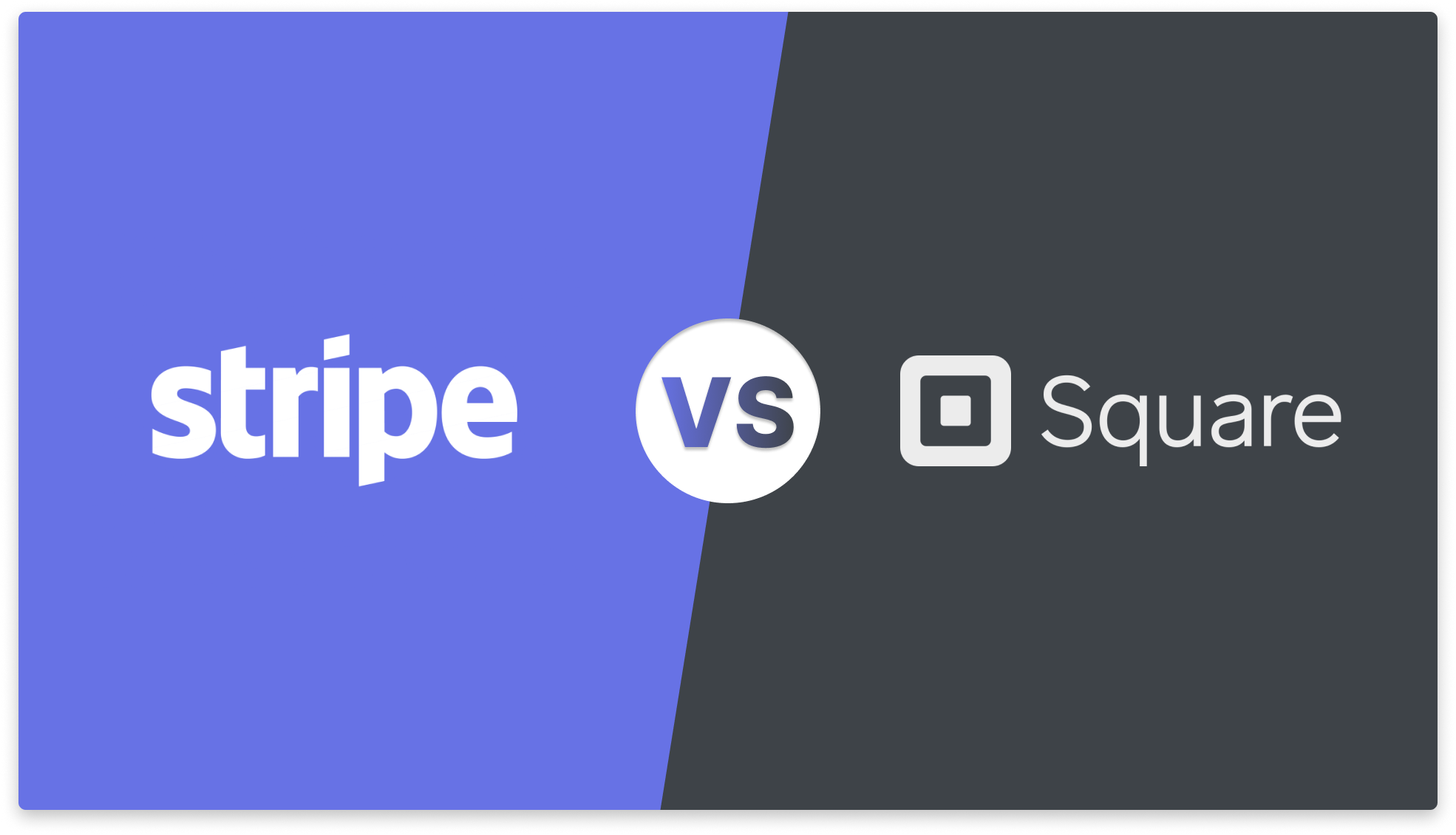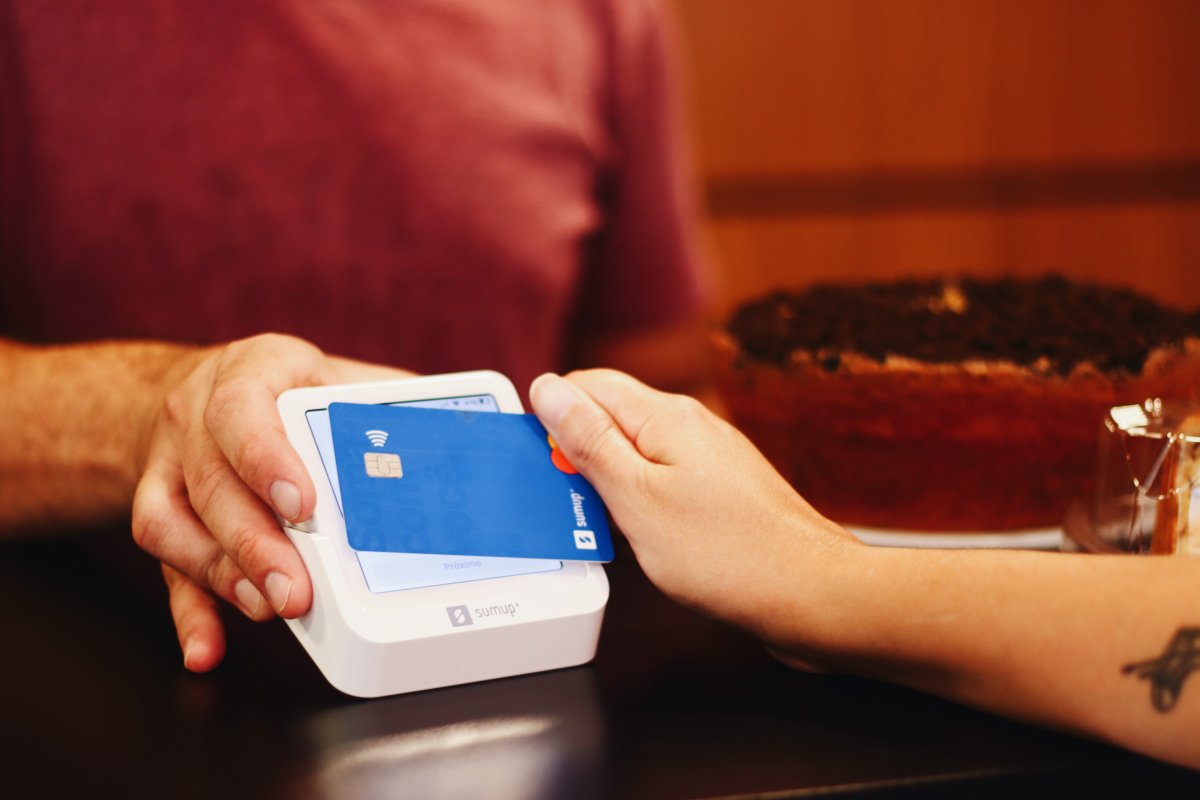I’ve compared Stripe and Square, two of the largest payment processing platforms in the world, in a detailed head-to-head review. My goal is to help you make an informed choice about which is the better choice for your needs.

Is Stripe or Square Better?
The main difference between Square and Stripe is that while Square does offer website payment processing it remains primarily focussed on the card reader and POS market while offering online payments as a secondary benefit for those customers.
Stripe has the opposite focus: it is very focused on online payments and offers card readers as a secondary option.
Square might be better if
✅ You want the cheapest card reader on the market at just £19
✅ Your primary business is in-person, such as retail or hospitality
✅ You want more POS hardware options that are easy to scale as your business grows
✅ You want more comprehensive features like inventory management and marketing
✅ You want cheaper per-transaction processing fees on your website (1.4% + 25p for UK cards)
✅ You don’t want to pay £20 for a chargeback
Stripe might be better if
✅ You primarily accept payments online
✅ You’re a larger or enterprise online business with complex requirements
✅ You need lesser-known payment options (such as JCB, Diners Club, Union Pay)
✅ You need to accept payment in multiple currencies
✅ You have complex API integration requirements
✅ You don’t need POS functionality such as team management
Stripe vs Square Comparison
Stripe vs Square: Payments
| Square | Stripe | |
|---|---|---|
| Accepted Payments | Visa, Mastercard, Amex, Apple Pay, Google Pay | Visa, Mastercard, Maestro, Amex, Discover, JCB, Diner’s Club, Union Pay, Apple Pay, Google Pay & more |
| In-Person UK Cards | 1.75% | 1.4% + 10p |
| In-Person International Cards | 1.75% | EEA Cards: 1.4% + 10p for EEAOther International Cards: 2.9% + 10p |
| Online UK Cards | 1.4% + 25p | Standard UK Cards: 1.5% + 20pPremium UK Cards: 1.9% + 20p |
| Online International Cards | 2.5% + 25p | EEA Cards: 2.5% + 20pOther International Cards: 3.25% + 20p |
| Chargeback Fees | £0 | £20 per dispute |
| Invoicing | ✅ | ✅ |
| Recurring Payments | Normal transaction fee | Transaction fee + 0.5% |
| Instant Payouts | 1% | 1% |
| Tap To Pay | Transaction fee | Transaction fee + 10p per authorisation |
| Bespoke Rates | ✅ | ✅ |
| Learn More | Visit Square | Visit Stripe |
Fees
Both Stripe and Square have a pay-by-use pricing structure, without long-term contracts.
Square charge 1.4% per online transaction + 10p, while Stripe charge 1.75%.
Stripe’s in-person transaction rate is cheaper than Square for most cards, but not all.
Stripes 2.9% + 10p transaction rate for international cards is much higher than Square’s 1.75%
Stripe supports more payment methods, including Discover, Diner’s Club, and Union Pay, allowing you to adapt to your customer’s preferences.
Square is generally more cost-effective than Stripe for online payments. However, it is 5p more expensive if your customers use a card issued within the EEA.
Hidden Fees
Aside from processing rates, the other key difference between Stripe and Square is the hidden fees.
Unlike Square, Stripe charges for chargebacks, recurring payments and using their Tap to Pay software, increasing your costs.
Multiple Currencies
Stripe also supports payments in over 135 currencies, making it ideal for businesses with an international reach. In contrast, Square only lets you accept payments in the currency used in the country where your account is registered.
If you operate in more than one country, you could open separate accounts to handle each currency, but this would be inconvenient.
Stripe vs Square: POS
| Feature | Square | Stripe |
| Order Management | ✅ | Through 3rd party integrations |
| Inventory Management | ✅ | Through 3rd party integrations |
| Team Management | ✅ | ✅ |
| Marketing | ✅ | Through 3rd party integrations |
| Loyalty Programmes | ✅ | Through 3rd party integrations |
| Specialised Systems | Restaurants & Retail | ❌ |
| eCommerce Support | ✅ | ✅ |
| Reporting | ✅ | ✅ |
| Multi-Location Support | ✅ | ✅ |
| Learn More | Visit Square | Visit Stripe |
Square offers more far comprehensive Point of Sale (POS) capabilities than Stripe as this is its primary area of focus. From simple card readers to till systems, printers and multi-location support, they aim to be a one-stop shop for businesses needing to take physical payments.
Stripe’s POS solutions, on the other hand are very limited and not something you’re likely to choose if you’re using a POS system as a major part of your business. They do offer third-party software integrations but their readers are rudimentary by comparison.
Stripe vs Square: Hardware
| Square | Stripe | |
|---|---|---|
| Hardware | ||
| Card Readers | £19 + VAT | BBPOS WisePad 3 – £49BBPOS WisePOS E – £179 |
| Terminals | £149 + VAT | ❌ |
| Register | £599 + VAT | ❌ |
| Accessories | From £29 + VAT | ❌ |
| Hardware Kits | From £339 + VAT | ❌ |
Square offers far more hardware options than Stripe, making it more suitable for businesses that frequently accept in-person payments.
The Square Reader is one of the most affordable and portable card readers on the market. Square’s Terminal and Register combines payments and POS for more advanced countertop solutions. Hardware bundles and accessories such as docks and printers are also available, making Square more convenient.
In contrast, Stripe’s hardware is limited to two card readers.
Stripe’s card readers are more expensive and less portable than Square’s, but they can connect to your system via server-driven integration, React Native, and JavaScript. No terminals, registers, accessories or hardware kits are available, making Stripe less convenient and scalable for growing businesses.
Stripe vs Square: User Experience
| Information | Square | Stripe |
| Trustpilot Rating | ⭐⭐⭐⭐ (4.1) | ⭐⭐⭐ (2.6) |
| Capterra Rating | ⭐⭐⭐⭐⭐ (4.7) | ⭐⭐⭐⭐⭐ (4.6) |
| Technical Experience | Best for beginners | Best for developers |
| Mobile App | Android Apps: POS, Team, Appointments, Invoices, Dashboard, KDS, RestaurantsiOS Apps: POS, Photo Studio, Team, Appointments, Invoices, Dashboard, Retail | Stripe Dashboard |
| Apple Store Rating | ⭐⭐⭐⭐⭐ (4.8) | ⭐⭐⭐⭐⭐ (4.7) |
| Google Play Store Rating | ⭐⭐⭐⭐⭐ (4.8) | ⭐⭐⭐⭐ (4.3) |
Both Square and Stripe offer a reliable user experience. However, there are some key differences.
Square is extremely user-friendly, and you won’t need technical experience or resources to get the most out of your system.
In contrast, Stripe is better for developers or businesses with technical resources. Its system is highly customisable but more complex than Square’s and will overwhelm smaller businesses.
Based on average ratings on Trustpilot and Capterra, Square has a more consistent score, indicating customers are more satisfied with their experience.
Both providers have mobile apps compatible with iOS and Android operating systems. Their average ratings are pretty similar, with Square coming out just ahead.
Stripe vs Square: Integrations
| Integration Partner | Square | Stripe |
| Accounting | Xero, Quickbooks, Sage and more | Zero, QuickBooks, Bookkeep Accounting Sync and more |
| eCommerce | WooCommerce, Ecwid, BigCommerce and more | Adobe Commerce, Salesforce B2C Commerce, SendOwl and more |
| Inventory | DEAR Systems, Thrive, Yellow Dog and more | Stockify and Synder |
| Loyalty | Digital Loyalty, TapMango, Subport and more | Rewardful and Pangea Labs |
| Marketing | Mailchimp, Chaty, Trustpilot Reviews and more | HubSpot Data Sync, MailerBuddy for ConvertKit, Prospero and more |
| POS | TouchBistro, Goodtill, Magestore POS and more | ❌ |
| Team Management | Deputy and Staffology Payroll | ❌ |
Both Square and Stripe have App Marketplaces that allow you to integrate popular 3rd party software with your system.
Square has a better choice of integrations, including accounting, eCommerce and marketing software such as Xero, WooCommerce and Mailchimp.
There are even specialist apps for food, restaurants and healthcare businesses, making Square suitable for many businesses.
Although Stripe also has a lot of integrations, its marketplace isn’t as extensive as Square’s.
For example, you won’t find any POS or team management apps, which could be inconvenient if you want to manage your business from one centralised location.
However, you can develop your own app, which is available for the public or your team. This would help you to tailor and optimise your system for a more bespoke solution.
Stripe vs Square: Security
| Security Feature | Square | Stripe |
| PCI Compliance | Level 1 PCI DSS compliance and encryption included | PCI-certified point-to-point encryption for 4p per authorisation |
| Chargeback Protection | Not needed | 0.4% per transaction |
| Disputes | Management tools included | Management tools included |
| Fraud Protection | Machine learning to monitor for suspicious transactions | Machine learning through Stripe Radar for 4p per screened transaction |
Both Stripe and Square have a range of security measures to protect your business’s and customer’s information.
However, to access Stripe’s security tools, you’ll need to pay a fee per transaction, which could be a drawback if you have a high transaction volume.
While Square includes Level 1 PCI DSS compliance and encryption as a standard, you’ll be charged 4p per authorisation for point-to-point encryption through Stripe.
Similarly, Square uses machine learning to monitor suspicious transactions and reduce fraud. However, machine learning through Stripe Rader will cost an additional 4p per screen transaction.
If you experience a lot of chargebacks, you might find Stripe’s chargeback protection cost-effective, but this service will incur a 0.4% fee per transaction. Square doesn’t offer a chargeback protection service as it doesn’t charge for these in the first place.
While these costs seem small, they could quickly add up and reduce your profit, depending on your transaction volume.
Stripe vs Square: Support
| Support Option | Square | Stripe |
| Phone | Available 9 am to 5 pm Monday to Friday | 24/7. Call request service only. |
| After raising a ticket | Response within 24 hours | |
| Live Chat | App & website | Available 24/7 |
| Developer Support | Forum, online form, Slack | Discord |
| Paid Support Plans | ✅ | ✅ |
| Resources | Seller Community, Support Centre, YouTube Tutorials, In-App Support | Guides and Support Centre |
Stripe’s customer support is more comprehensive than Square’s, with customers able to contact their team 24/7.
However, Stripe doesn’t have an inbound phone line, so you can only get telephone support if you request a callback. This could be inconvenient and potentially lead to system downtime.
Other support channels offered by Stripe include e-mail, live chat and a Discord channel for developers.
There are also troubleshooting guides and tutorials on the Support Centre, which can be accessed on the Stripe website.
In contrast, Square’s support is only available on weekdays between 9 am and 5 pm, which could be a problem if you experience an issue outside these hours.
There’s no e-mail support, but you can talk to an agency through the app and website.
Like Stripe, Square has a dedicated support channel for developers through Slack.
Other resources include a Seller Community, a Support Centre and video tutorials.
Both providers also offer paid support plans to help minimise interruptions to your service.
Square’s paid support plan gives you access to 24/7 support, whereas Stripe has three packages, which are ideal for businesses with high transaction volumes.



